Machine Learning, a subfield of Artificial Intelligence, is the new buzzword. Everyone seems to be doing the next available course in Machine Learning out there! You too are smitten by this breed of artificial intelligence. But don’t know what machine learning is? Thinking from where to start and how to proceed? We have got you covered here!
This article will focus on the basics of machine learning, machine learning basic concepts, and what are machine learning concepts. We will explore the important topics in machine learning, machine learning subtopics, and the significance of these machine learning topics. We shall also look at the machine learning process flow.
1. Basics of Machine Learning
The basics of machine learning cover the following concepts:
- What is Artificial Intelligence?
- What is Machine Learning?
- Types of Problems in Machine Learning
- Types of Machine Learning
- Algorithms of Machine Learning
- Applications of Machine Learning
You may also like to read: What is Machine Learning? Definition, Types, Applications & Examples
2. Artificial Learning (AI)
Artificial Intelligence (AI), a branch of computer science, refers to the stimulation of human intelligence in machines. The cognitive functions of the human brain are studied and replicated on a machine or a system that can mimic human behavior. Artificial Intelligence is rule-based and static, and it uses logic, if-else rules. It is applied to solve complex problems and automate routine work.
Artificial Intelligence has a segment called Machine Learning. One of the machine learning subtopics is Deep Learning that follows neural networking.
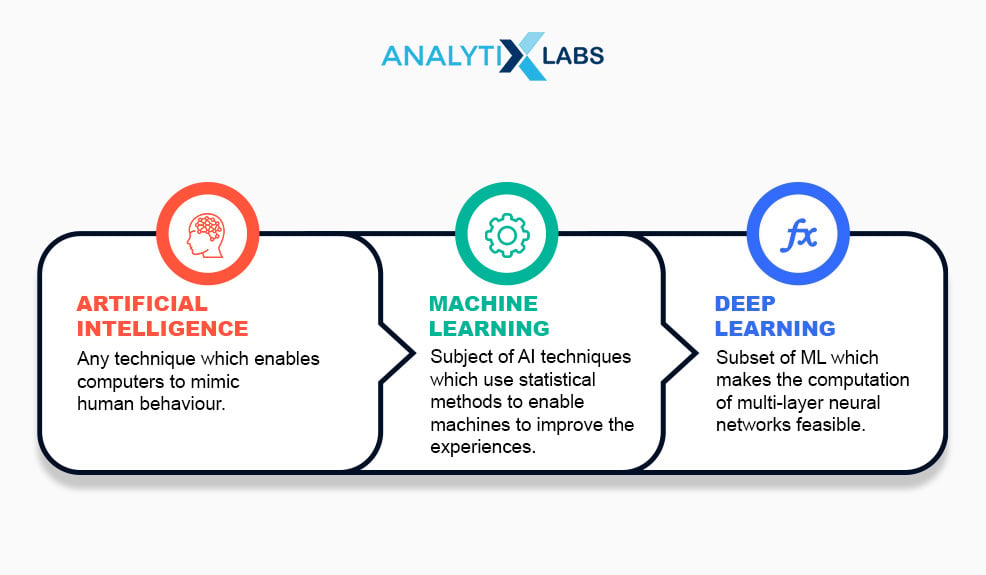
Related: Components Of Artificial Intelligence – How It Works?
3. Machine Learning (ML)
Machine Learning (ML) is an application of Artificial Intelligence that enables a system to learn and improve from experience without being explicitly programmed automatically. Machine Learning is dynamic and is not based on hard-coded rule-based instructions.
The Machine Learning process flow or its life cycle as follows:
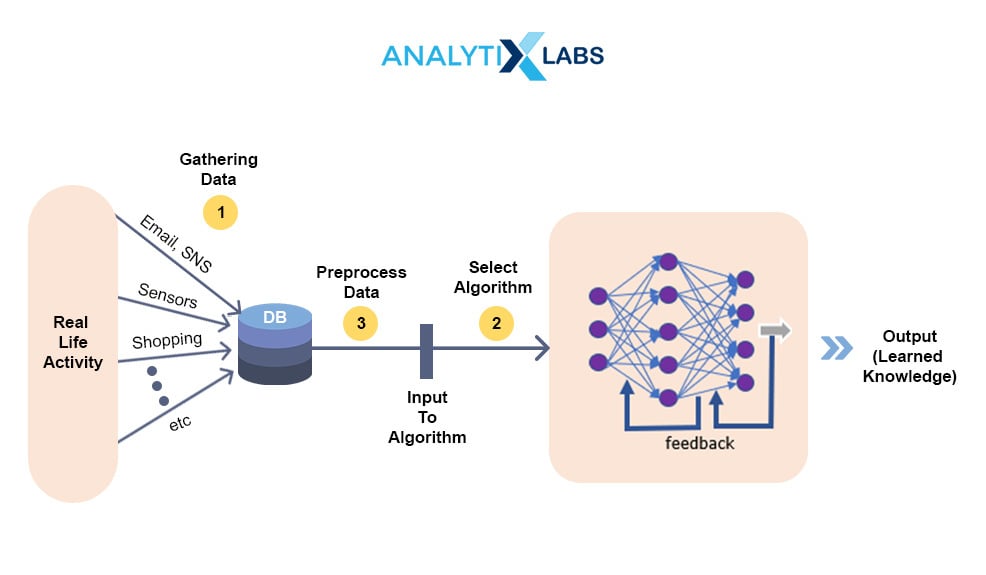
- Define Project Objective:
- Specify the business problem
- Convert the business problem to Statistical problem and then to optimization problem
- Define the unit of analysis and the prediction target
- Acquire & Explore Data:
- Find and acquire the appropriate data
- Data preprocessing to create homogeneity
- Conduct the exploratory data analysis
- Data Wrangling
- Feature engineering
- Perform Statistical analysis to find the relationships between the variables
- Model Building:
- Variable selection
- Select the right ML algorithms to identify the patterns
- Build the candidate models
- Model validation:
- Validate the model
- Tune the parameters
- Interpret & Communicate:
- Interpret model
- Communicate model insights
- Data Visualization, Implement, Document & Maintain:
- Create visual graphs of the results
- Document the modeling process for reproducibility
- Create model monitoring and maintenance plan
4. Types and Algorithms of Machine Learning
There are three main types of problems that can be solved using Machine Learning. These are based on the output:
- Regression: In regression problems, the output is continuous. Example: want to predict the loan amount, speed of the wind, speed of the car.
- Classification: Here, predicting an event or class of the data into a predefined group. The output is a categorical value. Example: classifying emails into two classes: spam or not spam, whether a person has diabetes or not have diabetes.
- Clustering: In this problem, we classify the data into n-number of classes, where n is not predefined. The difference here from the classification problem is that the number of the groups is not predefined—for example clustering customers into similar groups based on their demographics, interests, purchase history.
Regression and Classification are Supervised Learning methods, and Clustering comes under the Unsupervised Learning methods. We shall discuss below these basic machine learning concepts.
You may also like to read:
1. What is Linear Regression In ML? With Example Codes
2. Logistic Regression in R – Explained with Simple Examples
3. What Is Classification in Machine Learning? Classification Algorithms
5. Types and Algorithms of Machine Learning
One of the important topics in machine learning is what are the types of machine learning? The machine learning topics also involve algorithms. The four primary types of learning and along with their respective algorithms available as follows:
5.1 Supervised Learning
In supervised learning, the algorithm learns on the labeled dataset, where the response is known. This acts as a ‘supervisor’ to train the model that provides an answer key that the algorithm can use to evaluate its accuracy on training data. This is used to predict the values for future or unseen data. This is a task-driven technique.
Examples of Supervised learning are customer churn, employee attrition, detection of fraud transactions, forecasting sales price of products, predicting subscriptions renewals, spam filtering, handwriting recognition.
The supervised learning algorithms are:
- Linear Regression
- Logistic Regression
- Decision Trees
- K-Nearest Neighbors
- Naive Bayes
- Support Vector Machines
- Ensemble Learning Techniques
5.2 Semi-Supervised Learning
Semi-supervised Learning falls between the supervised and unsupervised learning techniques. It uses both the labeled and unlabeled data for training where the labeled data is typically a small amount, and the unlabeled data is large in number.
It is useful for speech analysis, web content classification, photo tagging, text documentation. The algorithms of Semi-supervised learning are Pseudo Labeling, Semi-Supervised Generative Adversarial Network (SGAN).
5.3 Unsupervised Learning
In unsupervised learning, the model infers the hidden structure, pattern on the unlabeled data. There is no response or the target variable present in such data to supervise the analysis from what is right or what is wrong. The machine tries to identify the pattern and gives the response. In the absence of the desired output, the data is categorized or segmented using clustering. The algorithm learns to differentiate correctly between the face of a human to the face of a horse or cat. This is a behavior-driven technique.
Examples of unsupervised learning: customer segmentation, image segmentation, market basket analysis, delivery store optimization, identifying accident-prone areas.
The unsupervised learning algorithms are K-means Clustering, Agglomerative (Hierarchical) clustering, Spectral Clustering (DBSCAN), Association Analysis, Principal Component Analysis.
5.4 Reinforcement Learning
Reinforcement Learning is based on the feedback loop where an agent and environment is set up. This technique is behavior-driven and is based on the reinforcements learned via trial-and-error.
Here, the agent learns how to behave in an environment by performing certain actions and observing the rewards and results, which it gets from taking those actions. One example of this is to learn how to ride a bicycle. This method can optimize the operational productivity of systems, including robotics, academics, supply chain logistics, manufacturing.
The reinforcement learning algorithms are Q-Learning, State-Action-Reward-State-Action (SARSA), Deep Q-Network (DQN), Deep Deterministic Policy Gradient (DDPG).
For a depth explanation of each of the techniques and their applications, you may refer to our previous article on Types of Algorithms With Different Machine Learning Algorithm Examples.
6. Neural Network or Artificial Neural Network (ANN)
Artificial Neural Network (ANN) is also a part of Machine Learning. These machine learning concepts are the statistical models inspired by the functioning of human brain cells called neurons. ANN can mathematically model how the biological brain works, allowing the machine to mimic the human brain. ANNs can think and learn the same way humans do, enabling the machines to recognize things such as speech, objects, and animals in the same way a human does.
Deep learning is based on the concept of artificial neural networks (ANNs). This subset of Machine Learning allows the machine to train itself to perform a task by exposing the multi-layered neural network to vast amounts of data.
You may also like to read: Fundamentals Of Neural Networks & Deep Learning
7. Machine Learning Use Cases
One of the other machine learning topics is where all these techniques are used. It is extensively applied across industries and sectors. Some of the examples are Quora’s specific answer rankings used in search queries, fitness trackers such as Fitbits.
Applications of Machine Learning are:
- Prediction: ML can be applied to predict and forecast various aspects including stock prediction using ML, travel duration, weather, sales of a store, eligibility of loan.
- Medical diagnoses: Machine Learning can be implemented to detect terminal and non-terminal diseases.
- Financial industry and trading: companiesuse to detect fraudulent transactions, customers, make credit checks, credit defaults, optimize trading strategies using algorithms.
- Image recognition: Using image segmentation techniques, machines can identify objects, persons, places, digital images.
- Speech Recognition: It is a process to convert the voice instructions and searches to text. It is the translation of spoken words into the text. Various virtual assistants such as Google Home Speakers, Amazon’s Alexa, Google Assistant, Apple’s Siri, Microsoft’s Cortana use this technique.
- Automatic Language Translation, Auto-corrections: Machines can translate text from one language to another, auto-correct the spelling errors.
- Recommendation Engines: These are used by all the e-commerce retailers, movie web applications to recommend the next product or movie or web series to watch depending on the purchase or view history of the person and also based on what others have bought or seen based on your choice.
The following illustration summarizes the use cases of ML:
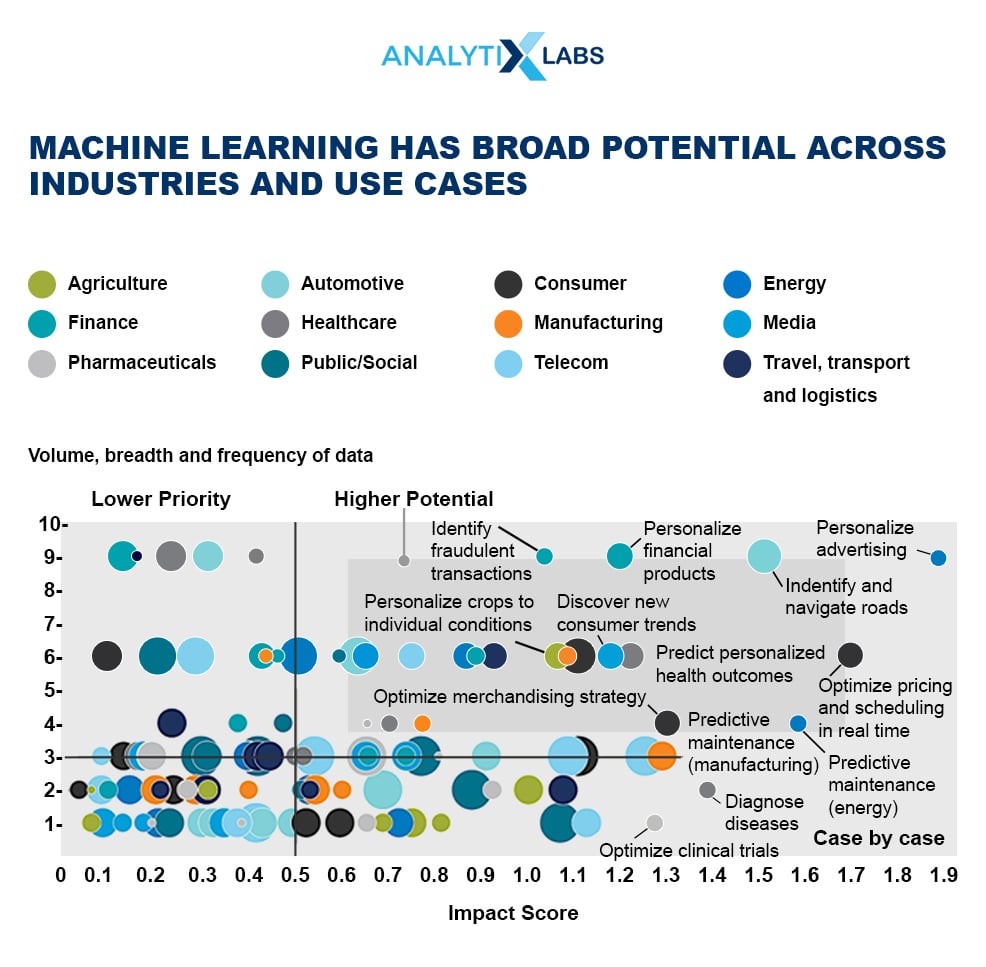
Endnotes
This article reviewed machine learning topics, machine learning basic concepts, basics of machine learning, workflow of machine learning, the most common methods, types of machine learning, algorithms of machine learning, and applications of machine learning.
In addition to this, you can learn more in-depth about what is Applied AI, prerequisites to learn Machine Learning and Applied AI, and Different Types of Algorithms of Machine Learning.
Below is the FAQ covering some of the frequently asked questions. If you have any questions or want to share your feedback then do reach out to us in the comments section below.
8. FAQs – Frequently Asked Questions
Ques 1. What is Machine Learning?
Machine learning is the subset of Artificial Intelligence. It is the practice of getting machines to make decisions without being programmed. It aims to build machine learning through data to solve problems—for example, churn prediction, detection of disease, text classification.
Ques 2. What is included in machine learning?
Machine Learning includes the following:
- Artificial intelligence
- Data science
- Computer science
- Mathematics
- Statistics
- Data mining
- Deep learning
- Natural Language Processing
Ques 3. What is Artificial Intelligence?
“Artificial Intelligence (AI) is an area of computer science that emphasizes the creation of intelligent machines that work and react like humans.” “The capability of a machine to imitate intelligent human behavior.”
Ques 4. What are the topics in AI?
The topics in artificial intelligence are:
- Machine Learning
- Neural Networks
- Evolutionary Computation
- Computer Vision
- Robotics
- Expert Systems
- Speech Processing
- Natural Language Processing, and
- Planning
Ques 5. What are the 3 types of AI?
The three types of artificial intelligence (AI): narrow or weak AI, general or strong AI, and artificial superintelligence.
Ques. What are the subfields of machine learning?
The subfields of Machine Learning are:
- Deep Learning
- Text Mining
- Natural Language Processing
- Optimization
Ques 6. What is the syllabus of machine learning?
The syllabus of machine learning includes:
- Data Aggregation
- Data Preparation & Data Exploratory:
- Descriptive Analytics
- Descriptive Statistics
- Uni-variate Analysis
- Bi-variate Analysis
- Multivariate Analysis
- Inferential Statistical Analysis
- Outliers, Transformation
- Scaling(Standardization, Normalization)
- Feature Engineering
- Descriptive Analytics
- Pre-Model Building:
- Model Splitting
- Training, Test Data
- Regularization
- Supervised Learning Algorithms:
- Regression: Linear Regression, Logistic Regression
- Classification
- Decision Tree
- Ensemble Techniques (Bagging, Random Forest, Adaboost, GBM, XGBoost)
- K-Nearest Neighbors
- Naive Bayes
- Support Vector Machines
- ANN
- Unsupervised Learning Algorithms:
- Segmentation
- K-Means Clustering
- Agglomerative Hierarchical Clustering
- DBSCAN Clustering
- Association Analysis
- Dimensionality Reduction
- Model Metrics and Model Validation:
- Cross-Validation
- Hyper Parameter Tuning
- Overfitting and Underfitting
- Bias-Variance Tradeoff
- Python Programming Language
For cost-effective and comprehensive Machine Learning Courses, you may refer to our Python Machine Learning Course and Full Stack Applied AI Course
You may also like to read:
1. Machine Learning vs Deep learning- What Is the Difference?
2. Top 45 Machine Learning Interview Questions and Answers
3. Exciting Machine Learning Projects to Boost Your Profile for Job Prospects!

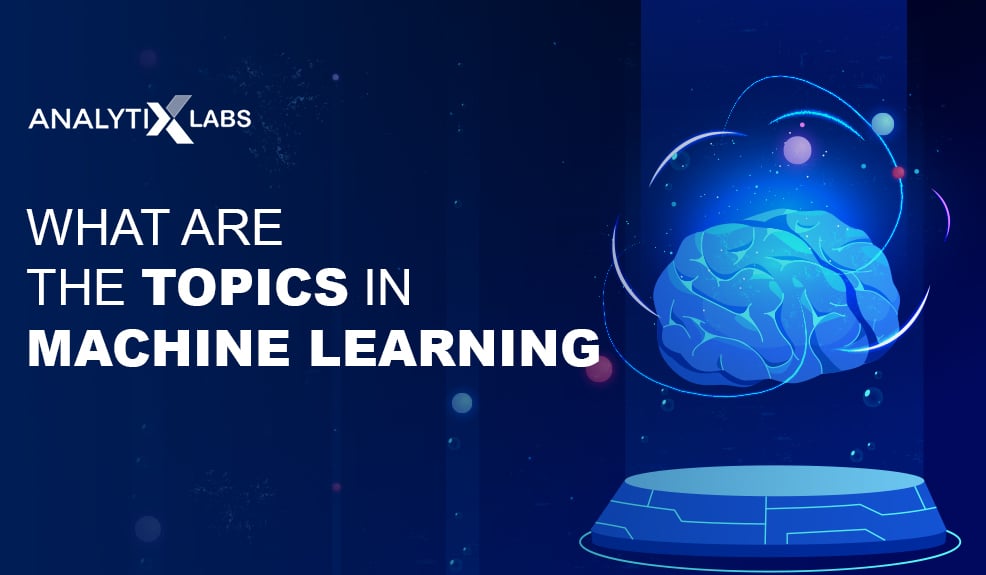
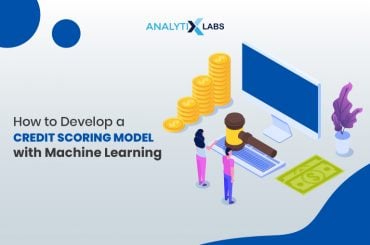
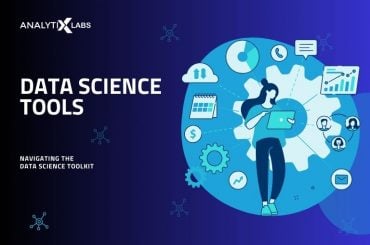
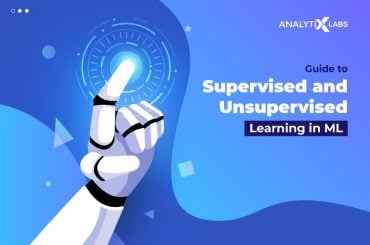




2 Comments
Nice Article including all kinds of machine learning and mathematical. Keep writing more.
Thank you for sharing this actionable strategy.